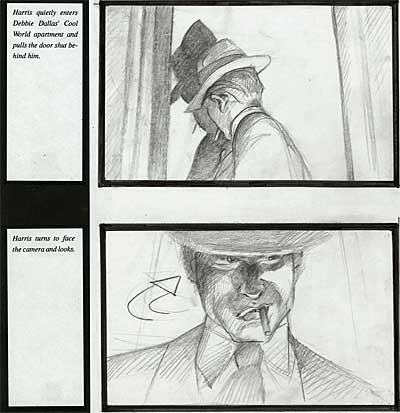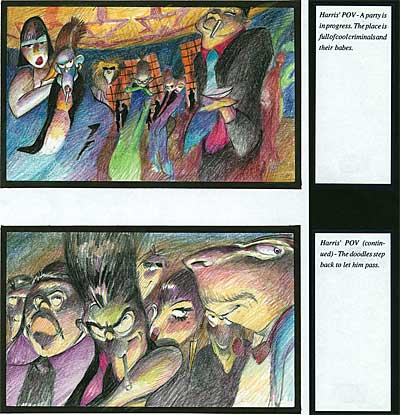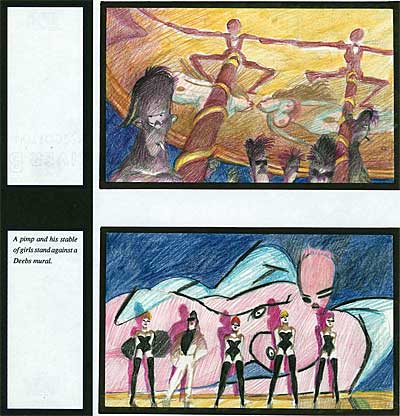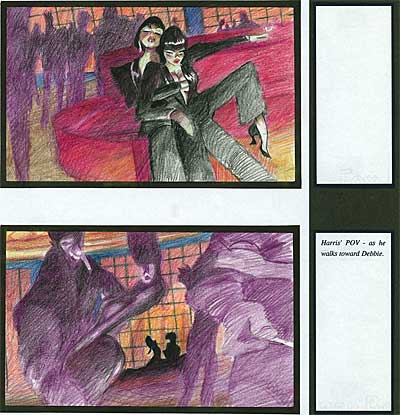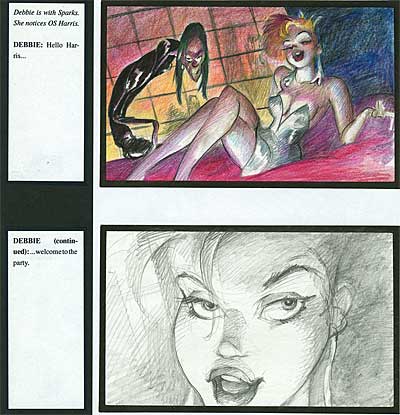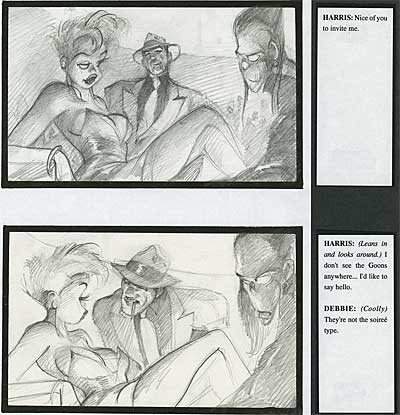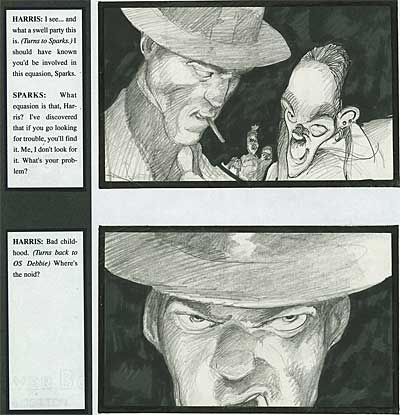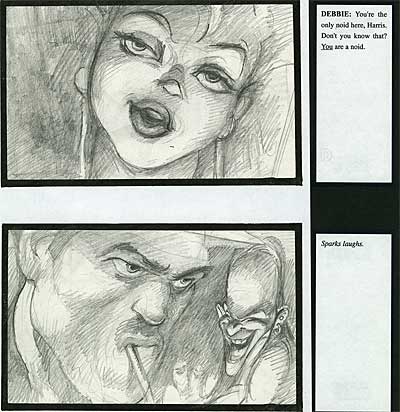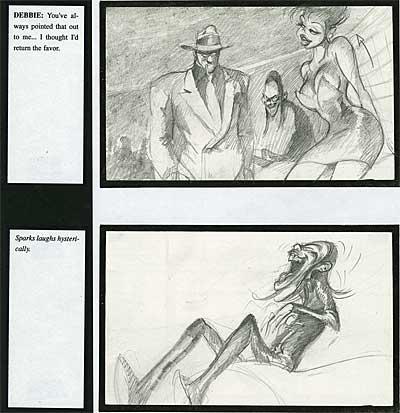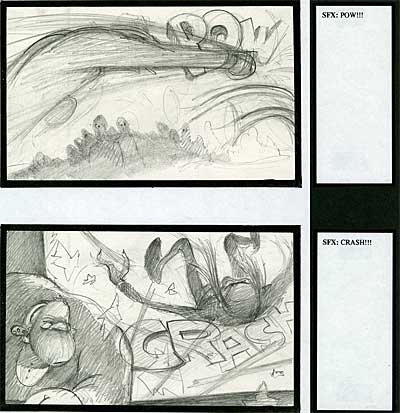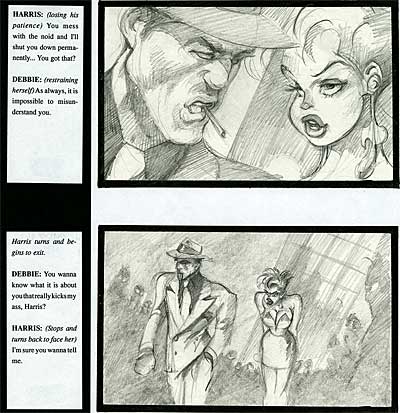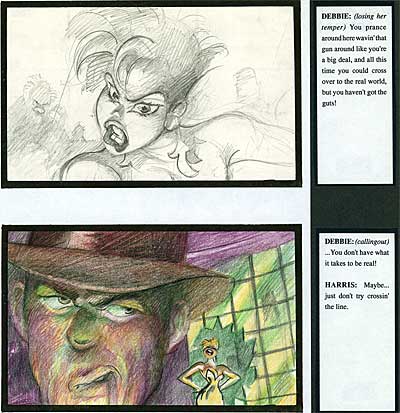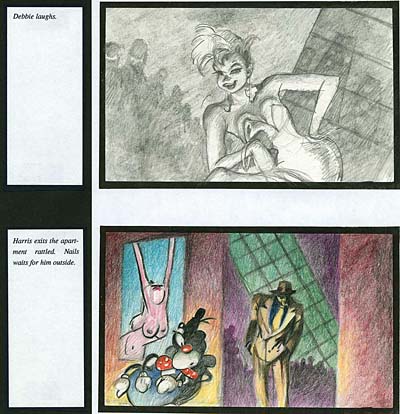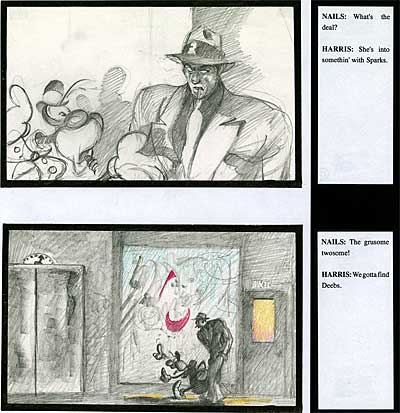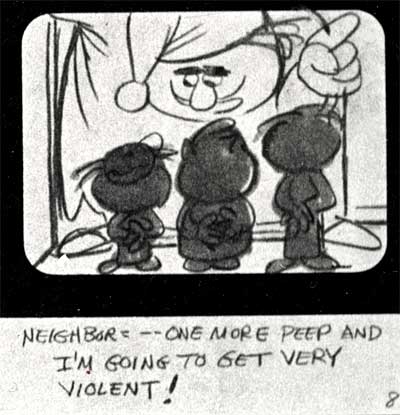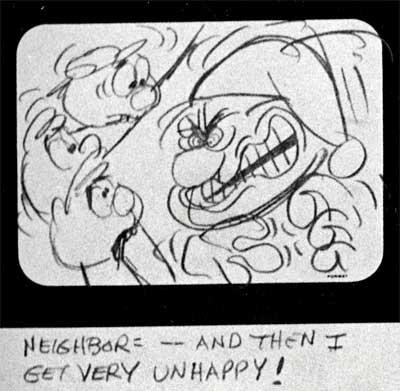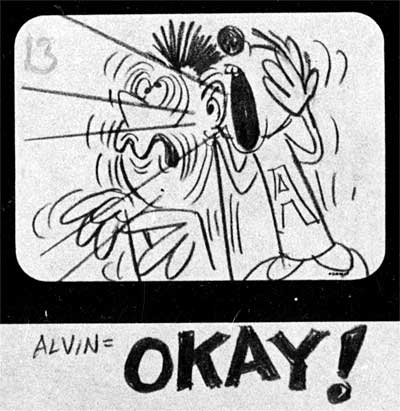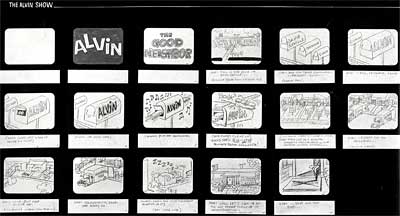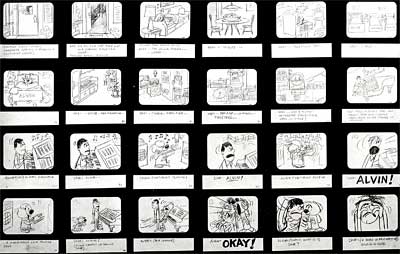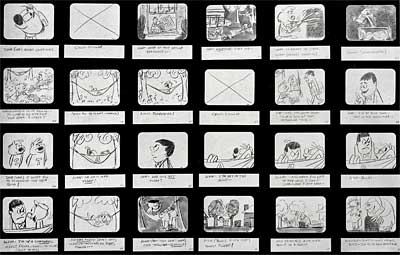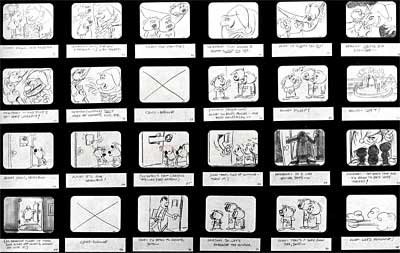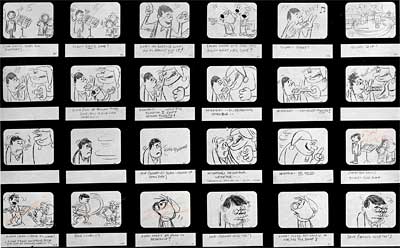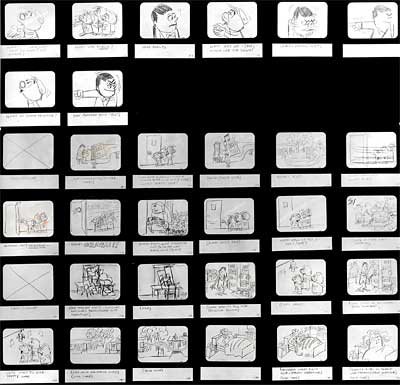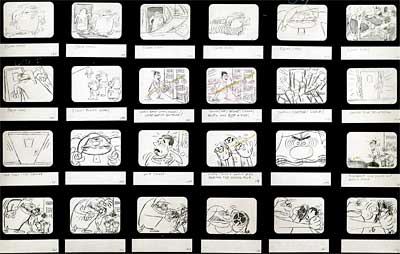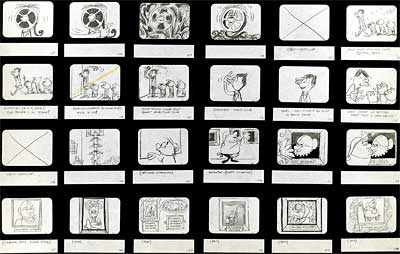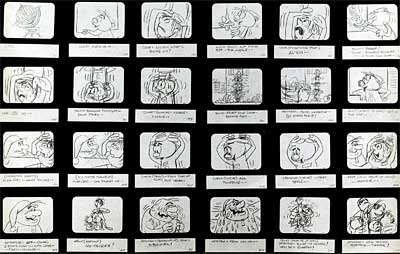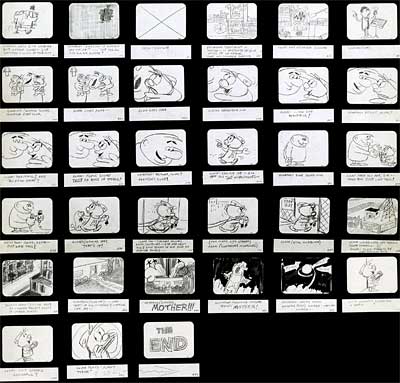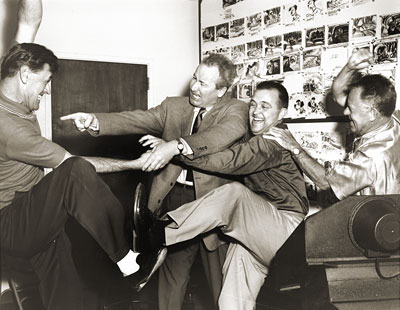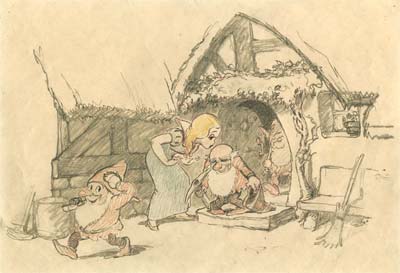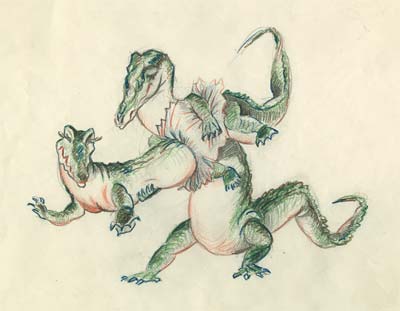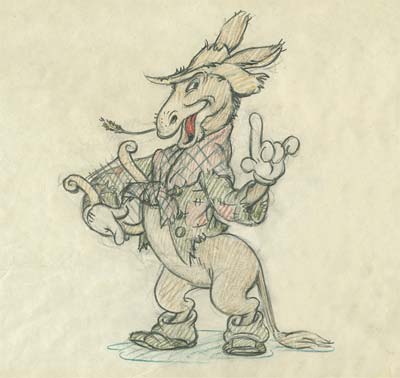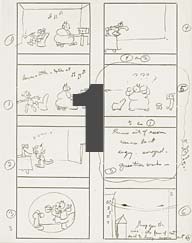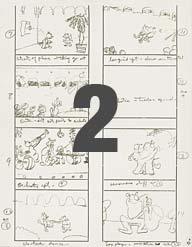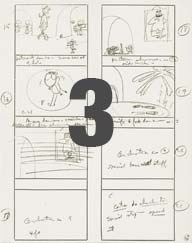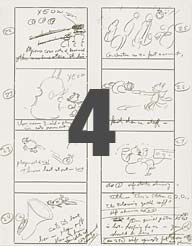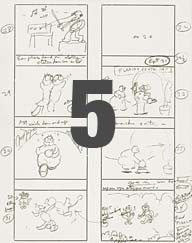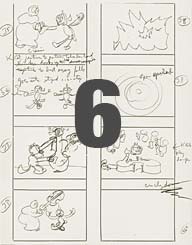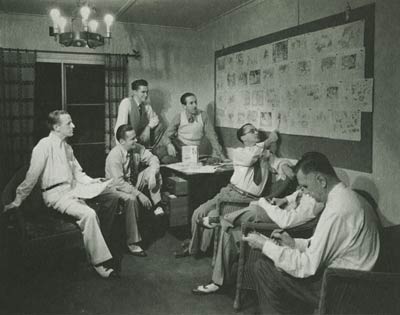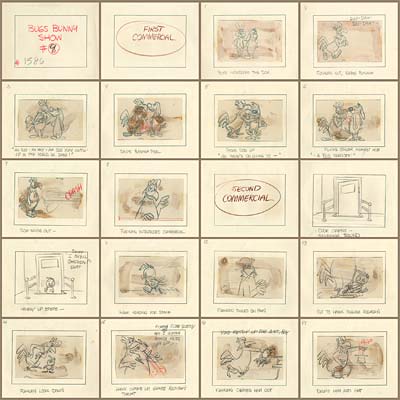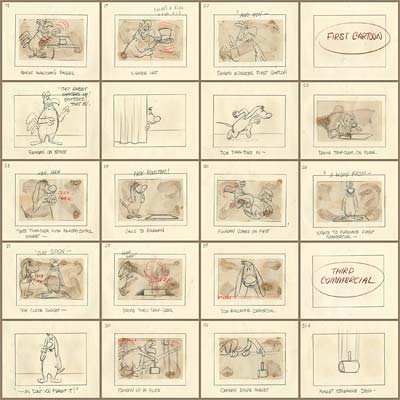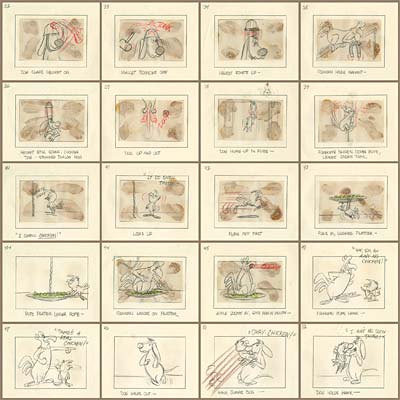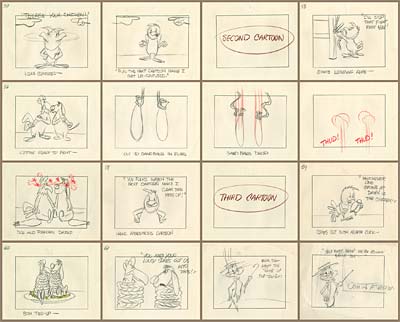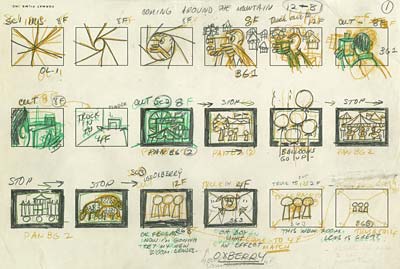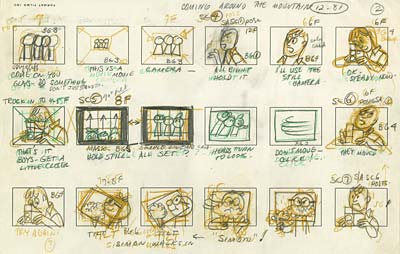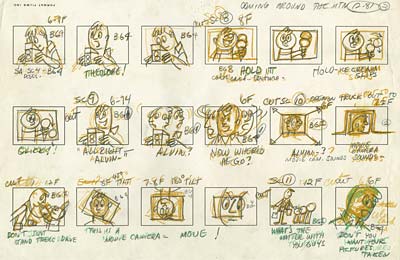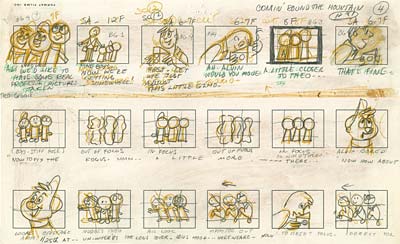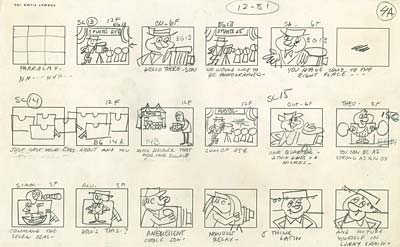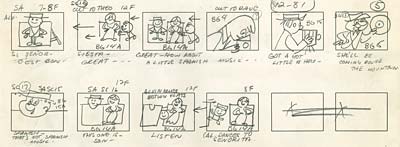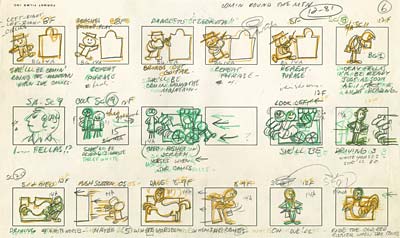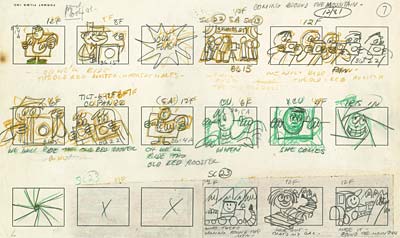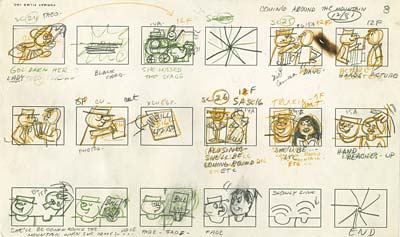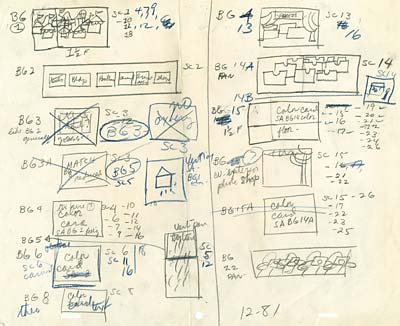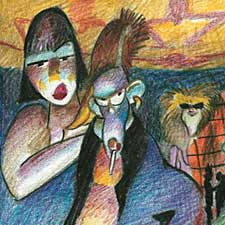
![]() Today, we digitized a section of storyboard from one of the biggest disappointments in recent times, Ralph Bakshi’s Cool World. This film could be the poster child for devastating executive interference. Paramount bought a hard-R, gritty, sexy, noir horror/thriller from Bakshi and proceeded to revise it into a low-rent Roger Rabbit aimed at teenagers. By the time the film was completed, it bore little resemblence to Bakshi’s original concept. But I’m not going to talk about that sorry story today… Instead, I’m going to tell you about an artist who worked on Cool World who you might not know about, but should… Louise Zingarelli. Louise was a very good friend of mine, and I’d like to share my personal take on her along with this section of storyboard that vividly illustrates her amazing talents.
Today, we digitized a section of storyboard from one of the biggest disappointments in recent times, Ralph Bakshi’s Cool World. This film could be the poster child for devastating executive interference. Paramount bought a hard-R, gritty, sexy, noir horror/thriller from Bakshi and proceeded to revise it into a low-rent Roger Rabbit aimed at teenagers. By the time the film was completed, it bore little resemblence to Bakshi’s original concept. But I’m not going to talk about that sorry story today… Instead, I’m going to tell you about an artist who worked on Cool World who you might not know about, but should… Louise Zingarelli. Louise was a very good friend of mine, and I’d like to share my personal take on her along with this section of storyboard that vividly illustrates her amazing talents.
Louise Zingarelli was the toughest individual I’ve ever met… and one of the sweetest. If she loved you, man! she REALLY loved you. If she hated you, Boy! you better watch out.
"Hate" isn’t a strong enough word for what Louise felt if she didn’t like someone. She had a special word for it… SKIEVE. To skieve something was to hate it to the point of physical revulsion. Louise skieved REAL GOOD. She skieved lots of things… parking tickets, Canadian animators, dentist appointments, Jesse Jackson and even Charles Soloman.
Charles made the mistake of criticizing Louise’s scenes in The Chipmunk Adventure in the L.A. Times. He wrote that they were "heavily dependent on the crutch of rotoscoping". When she read that, Louise flew into a rage. She hollered, "There wasn’t a single frame of roto in the whole goddamn picture! I didn’t use a CRUTCH! I used my HEAD, which is more than I can say for Charles friggin’ Soloman!" Louise brewed and fumed about that article for years, and finally got her chance for revenge at Grim Natwick’s 100th birthday party. When Charles got up to speak, Louise made a noise like a leaky radiator. The Canadian animators on the other side of the room picked it up, and pretty soon she had the whole place going. Charles never knew what hit him.
Louise always reminded me of the tomboy girl in Our Gang- the one who was small, but when her big brother got picked on by the neighborhood bullies, she would roll up her sleeves and wipe the floor with them. Louise was short, but if she was coming at you with THAT look in her eye, you’d swear she was ten feet tall.
Louise hated a lot of things, but she saved special hatred for "The Business"… those words would come out of her mouth dripping in vitriol. "THE BIZZZZZZNESSSSS!" You would need a rug doctor after she said it to clean up all the slime. If Louise knew I was writing about her here in a blog read by people in "the business", she would kick my ass all the way to hell and back.
Now I don’t want to make Louise sound like an unpleasant person. On the contrary, she was one of the most thoughtful and considerate people I ever met. I spent many evenings at her house, sharing in her gracious hospitality. She made the most amazing chicken in her Weber grill, and she taught me the value of keeing a bottle of good Russian vodka in the freezer, "just in case". If Louise loved you, you never had the chance to doubt or forget it. She loved just as passionately as she hated.
Louise was a great artist. She could paint with Prismacolors like nobody else. She would build up layers of colors that glowed on the paper. Her characters had an indefinable sense of "ugly-cute"… never cloying, always real. Some animators complained, saying her character designs were unanimatable, but by the time they ended up on the screen, her unusual shapes and true to life personality gave them extra life.
Louise was the fastest artist I ever met. On Cool World, she single handedly laid out all the girl scenes, keying out the poses until they almost animated. Her average footage on layout was over seventy feet a week.
At Bagdasarian, we shared an office. I think I was the only person who ever survived sharing an office with Louise. One day, I gave her an incidental character to design. She sat around sipping her coffee and smoking casually. I finally asked her if she was going to get around to doing the drawing, because the deadline was looming. She said, "Here’s a good bet. Get your watch out. I’ll design this character in one minute. You take the sketch to Ross for approval. I betcha two bits he not only approves it, he says he LOVES it." "You’re on!" I said.
So looking at my watch, I called out, "Ready… set… GO!" Louise just sat there smiling at me. I said, "Time has started." She nodded and set her cigarette down… smoothed out her paper… "Twenty seconds." I called out. She sat down and set in to work on the drawing. Her pencil flew over the paper- beautiful sweeping lines, completely original shapes. She finished the character with time to spare and tore it off her pad. I took the sketch next door to Ross’ office. He was on the phone, so I left it on the corner of his desk and went back to Louise. She was smiling like a Cheshire Cat. A couple of minutes later, we heard from the other side of the wall, "FAAAABUUULOOUSS!" Louise casually raised an eyebrow and quietly said, "Pay up."
After Cool World wrapped, Louise moved back to her hometown of Chicago. I heard from her a couple of times, but we lost touch. I later found out that she had moved back to Laguna Niguel and was undergoing kemotherapy for cancer. She fought it as bravely as all of her other battles, and for a short time it seemed like she had licked it. But it came back hard. She was very ill at the end. For weeks she lay in a coma. She was so private about her battle, her best friends didn’t know she was gone for a month afterwards. She chose to spend her last days quietly with her cats painting at the ocean.
I owe Louise big time. She championed me when I was just starting out in animation, and she never wavered in her faith in me. She was a great friend and I miss her a lot.
Stephen Worth
Director
Animation Resources
This posting is part of the online Encyclopedia of Cartooning under the subject heading, Animation.
THIS IS JUST THE TIP OF THE ICEBERG!
Animation Resources has been sharing treasures from the Animation Archive with its members for over a decade. Every other month, our members get access to a downloadable Reference Pack, full of information, inspiration and animation. The RefPacks consist of e-books jam packed with high resolution scans of great art, still framable animated films from around the world, documentaries, podcasts, seminars and MORE! The best part is that all of this material has been selected and curated by our Board of professionals to aid you in your self study. Our goal is to help you be a greater artist. Why wouldn’t you want to be a member of a group like that?
Membership comes in three levels. General Members get access to a bi-monthly Reference Pack as well as a Bonus RefPack from past offerings in the in-between months. We offer a discounted Student Membership for full time students and educators. And if you want to try out being a member, there is a Quarterly Membership that runs for three months.
JOIN TODAY!
https://animationresources.org/membership/levels/
FREE SAMPLES!
Not Convinced Yet? Check out this SAMPLE REFERENCE PACK! It will give you a taste of what Animation Resources members get to download every other month! That’s 560 pages of great high resolution images and nearly an hour of rare animation available to everyone to download for FREE! https://animationresources.org/join-us-sample-reference-pack/
![]()
![]() Animation Resources depends on your contributions to support its projects. Even if you can’t afford to join our group right now, please click the button below to donate whatever you can afford using PayPal.
Animation Resources depends on your contributions to support its projects. Even if you can’t afford to join our group right now, please click the button below to donate whatever you can afford using PayPal.














